While you might well wonder if you’ll need a pack mule to haul it, everything fits in the larger kit containers presented in Part 1. For basic kit components, see Part 2.
Many of the components presented here in Part 3 came out of my personal PSK and require proficiency in their use to be even minimally effective. At the time I’m writing this, I don’t sell or receive compensation for the sale of any product presented in this series of articles and I only use any given product until it breaks or I find something better.
* Asterisked items are redundantly listed because they serve multiple uses under more than one heading.
** Double asterisked items also appear in the basic contents list under Part 2 of this series and their descriptions can be found in that article.
*** Triple asterisked items are both redundantly listed and appear in Part 2.
Security/ Situational Awareness/ Escape/ Self-recovery
- OC Powder – (!!! Caution: Irritant. Handle with extreme care avoiding skin contact and inhalation. !!!) Oleoresin Capsicum (OC) is the active ingredient that gives chili peppers their heat and in concentrated powder form, is the irritant used in pepper spray. A small vial of this dust has been shown to be effective to contaminate scent tracks in some tests. Because there are many factors that affect scent tracking but employed in combination with visual counter-tracking techniques, OC contamination may not be effective in all environments, but a little OC powder can often buy the quarry some time. Dogs have the hardest time tracking scent trails over hard ground, in dry conditions where there are few microbes in the soil to be disturbed by the quarry’s passage, so OC is most effective under these conditions, but I have seen it successfully contaminate tracks in a forest setting. OC powder is also used in topical creams to relieve temporary muscle and joint pain, sprains, strains, backaches and nerve pain resulting from herpes zoster (shingles) by reduces a key pain messenger chemical. While OC powder has medicinal applications, a survival ordeal may not be the ideal place to experiment with it.
- Casualty Dosimeter Sticker or Card – Since these take up about as much room as a postage stamp, I carry one in my wallet and one in my PSK. Unless you are aware that you are being exposed to ionizing radiation, you won’t be able to protect yourself against it and seek shelter or get out of the contaminated area.
- SNAP Knife*** (Shelter Building, Fire Building, Food Procurement & Preparation) – I carry my primary knife elsewhere in my S/SR Core Layer, but I carry a backup knife in my PSK. The SNAP card was designed by Norseman, a retired Marine Sniper and contributor to the new US Armed Forces SERE manual and is hands down, the best knife I have found that will fit in a PSK. I reduced the angle of the grind a little along the top edge and corner of my own for fine work and skinning.
- Kevlar Thread, 85 Lbs. Test*** – In addition to the uses specified in Part 2, Kevlar thread is also very effective as trip line and can be used as friction saw to cut through duct tape, disposable restraints or rope if doubled over several times. In the trip line role, it’s most effective if you have both light and dark colors, but I’ve not yet had anyone spot any kind or color of trip line before tipping it, much less one as thin as a thread.
- LED & Spare Battery*** – Most of us need light to take stock of our situation, find a shelter site, gather wood or start a fire.
- IR IFF (Identification Friend or Foe) Patch – This small (usually 1”) Velcro patch reflects infrared light, identifying friendly forces as friendly to operators using image intensifiers or infrared lasers, preventing misidentification. These have been issued in combination with IR finger light LEDs in two-part US armed forces PSKs.
- Restraint Escape Tool – (!!! Important note about including restraint escape and lock tools in a PSK: I carry mine hidden on my person instead of in my PSK because you may not be able to get to them and hide them if surprised and your PSK will most likely be found and taken from you. I am only listing them here because even the SEALs include them in PSKs. I surely hope that they redistribute them before they head out, because getting a bunch of restraint escape tools found on your person could be bad news if captured. The risk is only mitigated by the fact that they can only be discovered if found, so make sure that won’t happen and imagine SEALs that get captured are in for a rough ride anyway. Don’t carry them in your wallet either because that’s the second thing they’ll look for, right after your weapons.!!!) I include a flat high-security handcuff key attached to a dual-pawl handcuff shim & reach tool of my own design. I seal it in coyote tan vinyl tape to make it harder to find in a pat down and so I can tape it to my body like a Band-aid if needed. I punch a hole in the tape so I can also hang it from a Kevlar thread for retrieval. US armed forces kits often include a handcuff key or two, and sometimes a few bobby pins or some Kevlar line or braided 7×7 steel wire.
- Lock Picks & Tension Tool – Keep them small. You don’t need anything fancy, just a rake for raking, pick for single pin picking (if it comes to that) and a tension tool
- Lock Jigglers – In a self-recovery scenario, a couple of jigglers or a fleet key or two could potentially score you a ride. It could be a huge risk to commandeer a vehicle and travel along lines of drift … or it could be your best chance to lose a tracker team or make it outside a search perimeter. I carry mine elsewhere in my survival/self-recovery core layer to give them a better chance of surviving a pat down and I use bobby pin as a combination keyring & clothing clip since it’s flatter and more useful than a split ring.
- Qwik Stick & EZ Decoder – The Qwik Stick is a knife or shank lock bypass tool that opens padlocks by manipulating the locking dog or dogs right up through the keyway and can open some wafer locks which are used on all kinds of cabinets (including key cabinets where keys to every lock in the place are often kept, including locks that are really tough to open without a key! Go figure.) The EZ decoder is inserted between the wheels of combination locks by decoding them or shimming them. These take up almost no room.
- Bobby Pins – The reason the SEALs carry bobby pins, but not lock picks is because bobby pins don’t look like lock tools, are easy to clip under hair or clothing and can be turned into picks, rakes, tension tools, cuff shims and many other tools. When space is at a premium, you can make anything you need from a few bobby pins instead of carrying an array of tools. The more tools you carry, the more likely they are to be found. The downside is that you may not have much time or resources to make what you need and the best chances to escape often occur soon after capture or during transport.
- Diamond Rotary Cutoff Tool – Easy to hide because they are so small and flat. Best tool for cutting teeth into regular handcuff keys to open high-security handcuffs and great for shaping bobby pins, hair clips or any metal trash you can find into tools.
- White Petrolatum*** – In addition to the uses mentioned in Part 2, it can be used to slip handcuffs or other restraints.
- Red LED & Battery – Preserves night vision and attracts less attention than white light.
- Safety Pins *** – In a pinch, a safety pin can open some flex cuffs, can be bent into lock tools or can be used to conceal more effective tools underneath layers of clothing.
Medical/ First Aid
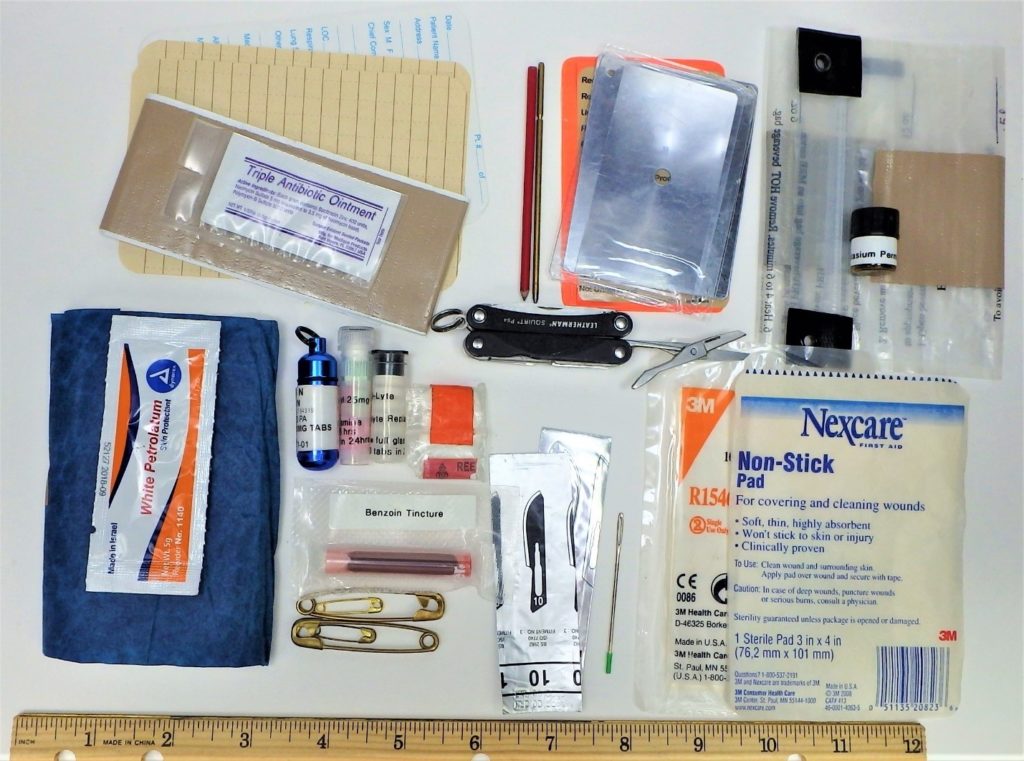 Use kit contents in combination with improved and/or scavenged materials.
Use kit contents in combination with improved and/or scavenged materials.
- Non-adhesive Gauze – Cut or fold and add to quality medical tape such as 3M Durapore Tape to improvise virtually any size and shape of wound covering without carrying boxes of them.
- Medical Cotton – Medical cotton keeps the contents of the kit from rattling and is useful to pad blisters, drain wounds and can be twirled onto a twig when a cotton swab is needed. Cotton is extremely hydrophilic and will soak up droplets of water than find their way into your kit. What you shouldn’t do is let your inner cub-scout or some DIY graphic convince you to premix medical cotton with petroleum jelly or white petrolatum. Before you mix them, both items are extremely multi-use, having dozens of survival applications each, but once mixed, they are reduced to a sticky, messy one-trick pony only good for starting fires. Store them separately and mix them as needed.
- White Petrolatum – White petrolatum is so useful that I also carry a small tube in my pocket with my EDC gear instead of other lip balm products. It can protect the face from cold and wind exposure, help slip restraints, keep burned tissue from drying out and cracking (don’t apply until the wound has been thoroughly cooled and heat is no longer dissipating so it does not make the burn worse by retaining heat) and can be mixed with cotton and used as a fire started or even burned as fuel in place of a candle.
- Z-Pak – (Requires a prescription) Azithromycin is a wide spectrum antibiotic that only requires 6 pills for a full course of treatment, making is small enough to include in a PSK.
- Long-Acting Painkiller – (Requires a prescription) Severe injuries often accompany or precipitate survival ordeals. People love to say that pain doesn’t kill, but this is not true. Severe pain contributes to shock, can cause panic and degrades cognitive function, all of which can be deadly in a survival ordeal. Just be sure to follow dosage instructions and properly titrate the patient. Misused, painkillers could be just as deadly as the conditions they are used to treat. Which painkiller is right for you is a matter best worked out with a healthcare professional, but it must be compact to include it in a PSK.
- Short Acting Painkiller – (Prescription required) All pain medications must be properly dosed and titrated. Survivors are better off not using medicines or medical equipment than using medicine or gear they have not been trained to use.
- Anti-diarrheal (2-4) – Diarrhea is a common ailment during survival ordeals and can quickly lead to dehydration and contributes to hyperthermia and hypothermia.
- Antiemetic (2-4) – Vomiting is another common ailment during survival ordeals that can cause the survivor to lose precious calories and like diarrhea, can contribute to both hyperthermia and hypothermia.
- Electrolyte Tablets – While oral rehydration therapy with a product such as Cera-Lyte (a rice-based electrolyte mix with antiemetic properties) is more effective, there may not be room for oral rehydration powder in a pocket kit. Due to the limited space, electrolyte replacement tablets in a glass of water are the next best thing. Dehydration is a constant danger in during survival ordeals. It is common for survivors to over-exert themselves trying to save others or walk out to get help. Even with plenty of water, you can only drink so much of it under extreme exertion and you reach a point where if you take one more sip you’ll vomit. You may be very thirsty but unable to drink because the water is diluting what little electrolytes remain in your system. While more water would make you vomit, a sports drink would not, because it has what your body needs.
- Triple Antibiotic Ointment – The last thing you need during a survival ordeal is for a cut to get infected. Military kits usually include single antibiotics because a small segment of the population is allergic to some topical antibiotics. Be sure you do not pack anything in you PSK that you are allergic to.
- Benzoin Tincture – Benzoin is a skin protectant and greatly improves adhesion of adhesive dressings which is crucial in a survival setting because survivors must work to survive. I include a small glass ampule of Benzoin Tincture in all by the tiniest PSK’s and seal it in plastic bag to protect it.
- Wound Closure Strips – Wound closure strips are adhesive strips that use adhesive to keep lacerations closed so they can knit. They are very effective when used in combination Benzoin Tincture and I have used them successfully on lacerations that I thought would surely need to be sutured. To my surprise, the cut healed properly even though I could not rest the cut appendage. A sheet of wound closure strips is so thin that it can be easily added to a PSK. Just be sure to use a quality product such as 3M Steri-Strips.
- Brass-Coated Safety Pins* – Safety pins come in handy for removing splinters, fastening cravats and other medical uses and are much easier to improvise a fishhook out of than plant material or bone. I prefer brass safety pins because they don’t rust. Include a couple of sizes.
- Sewing Needle* – Useful to remove splinters, lance boils or pick debris out of road rash if disinfected. Can be bent, disinfected and used in combination with disinfected thread for field-expedient suturing.
- Small Multi-tool – The Leatherman Squirt is included in some survival kits issued to US Armed Forces. The pliers are useful to remove cactus spines or porcupine quills, especially if they have embedded in bone. Includes a small blade, a file, screwdrivers and scissors, which are a big help to cut gauze and tape to cover wounds and blisters. Alternatively, you could choose a Leatherman Micra or similar tool. If you work or travel with a group, it increases adaptability and versatility if each member carries a multitool that features different tools.
- Modified MRE Hot Beverage Bag *** – Be sure to check uses in Part 2.
- First Aid Instructions, Patient Treatment Forms (Water-resistant) & Thin Pencil* – Even if you’re a highly-trained emergency medical professional, someone else could end up using your kit to treat you. Even if no one is injured, the paper and pencil can be used to leave weather-resistant notes, take notes or plan.
- Mirror*** – A mirror is necessary for self-treatment because there are so many parts of the body you can’t see without it.
- Rod Magnets from SERE Compass*** – Useful to remove ferrous eye particles.
- Fishing Line*** – Useful to remove fishhooks from flesh or can be formed into a small loop to remove particles from the eye.
- Lighter – Handy for heating medical instruments to sterilize them or for use. An example would be blunting a safety pin and then heating it to melt through a finger or toenail to allow the expulsion of blood pooled in the nail bed underneath the nail. (Although it may sound gruesome, the procedure is painless and provides instant relief from throbbing pain.)
Exposure – Fire
- Spark Wheel** – A spark wheel or spent lighter can be used to easily start a fire one-handed and should be included for this reason alone.
- Medical Cotton* & White Petrolatum** – Aside from its many first aid applications, cotton also makes outstanding tinder when combined with a little white petrolatum or petroleum jelly. Just be sure to ignore the innumerable sources that recommend combining them before they go in your kit. Separate, they have unlimited uses. Combined, they are only good for tinder. Don’t combine them until needed.
- Tinfoil*** – Tinfoil is useful as a barrier to keep tinder up off snowy or wet ground. It also makes a good windbreak.
- Candle – A squared candle stub provides light and warmth and can often dry out tinder that is less than ideal.
- Carbide Striker/Knife Sharpener – One of the most effective ferro rod strikers I have tested, the Handy-Sharp Mini sharpener (red at bottom right) is light, compact and well-suited to PSKs.
- Ferro Rod/Magnesium – Because magnesium burns at up to 5,610 degrees Fahrenheit, a small block or rod is a desirable tinder source. Create a small pile of shavings in the center of a tinder bundle and ignite it with sparks from a ferro rod.
- Wind & Water-resistant Matches & Strike Surface – Matches are still one of the most convenient and reliable methods of fire starting. Using a match to light a candle and using the candle to start the fire can conserve matches.
- Fresnel Lens – A Fresnel lens takes us little space or room in a kit and can come in handy to read instructions, remove splinter and eye particles, examine the skin and to start fires by concentrating sunlight.
- Lighter – A small lighter may also earn itself a place in your PSK and can be used as a spark wheel even after it runs out of fuel and is handy to sterilize or heat medical instruments.
- Duct Tape*** – Serves double duty as tinder.
- Paper*** – Also useful as tinder.
- Potassium Permanganate*** – Used for first aid and water treatment, KMnO4 can also be used to start a fire. Combine with glycerin from a first aid kit, glycerol-based anti-freeze or ground together with sugar using wood as mortar and pestle.
- Knife*** – A knife is useful to harvest and prepare tinder and kindling. I also include a small adhesive diamond sharpening surface to keep knives and fishhooks sharp.
- Wire Saw* – A wire saw can be used in combination with cordage to cut branches from standing dead timber in areas that have been picked clean of firewood. I only use the US military issue spiral bladed saw and I toss the supplied rings and crimp loops of braided stainless-steel wire to the blades to attach handles without taking up too much room in my PSK.
- Tinder Tabs or Fire Fuses – Many commercial tinder products combine cotton with paraffin, olive oil and/or petroleum jelly. The cotton typically comes from gauze dental rolls so don’t hesitate to reach for a first aid kit to get a fire going in an emergency or to find compacted cotton to use in very small kits.
Exposure – Shelter
- Knife*** – Useful to collect and prepare shelter materials.
- Wire Saw* – Useful for cutting ridge poles and supports, a quality wire saw is quieter and safer than an axe or machete but be sure to learn to use it properly or chance of breakage increases.
- Emergency Bivvy, Aluminized Polyethylene** – A bivvy retains heat more effectively than a blanket and can be opened or turned into a poncho if needed.
- Diamond Sharpener*** – Keep tools sharp. Sharpen fishhooks before use.
- 100MPH Tape*** – Uses include building shelters, most importantly, sealing the seams on a “super shelter” or greenhouse shelter. This type of shelter allows long wave heat from a fire to pass through a transparent wall where it is reflected down on the occupant and trapped inside the shelter by the greenhouse effect. Such a shelter only requires a reflective emergency blanket or bivvy, a transparent sheet or poncho, a ridge line and … adhesive tape wide enough to seal the seams.
- Emergency Poncho, Clear – Adds precious little bulk and makes it possible to build a greenhouse shelter as described above.
- Emergency Blanket, Aluminized Polyethylene*** – Whether you choose to carry pocket emergency blanket or bivvy sack, make sure it’s aluminized polyethylene instead of Mylar. “Poly” blankets are tougher and quieter. If you haven’t spent a night under an emergency blanket yet, “quieter” is a big deal. Most folks are not able to get much rest due to the rustling of Mylar without ear plugs, both of which are liabilities
- Emergency Poncho, Aluminized Polyethylene – This is another option in warm and rainy climates where you won’t need a greenhouse shelter.
- Composite Cordage – There are now several varieties of composite survival cordage on the market that feature a kernmantle sheath spun over inner strands like para cord only some of the inner strands are replaced with cordage of varied sizes that is more useful for survival purposes such as Kevlar, Technora, monofilament fishing line or wire.
- Type 1A Survival Cord***
- Kevlar Thread, 80LBS. Test***
Water
- Bread Tin* – See Part 2.
- MRE Hot Beverage Bag, Modified*** See Part 2.
- Water Treatment Tablets** – See Part 2.
- Type 1A Survival Cord*** – See Part 2.
- Electrolyte Tablets* – See description under Medical heading.
- Vitamin C, Powdered – Useful to precipitate the free iodine out of treated water after sufficient exposure time to improve the taste. If you use iodine for water treatment and have children, I strongly recommend carrying powdered vitamin C and/or drink mix to improve the taste. Otherwise you may waste energy trying to get them to drink. Also prevents scurvy and boosts the immune system.
- Potassium Permanganate***
- Iodine Tincture, 2%* – Useful as both a topical disinfectant and to treat water, but not that it is not considered effective against the protozoa Cryptosporidum parvum. Add five drops per liter and let sit 30 minutes. Double the contact time to an hour in cold water. Double the dosage to 10 drops in turbid (cloudy) water. Use 10 drops and let sit an hour if water is both cloudy and cold.
- CeraLyte Electrolyte Drink Powder – Better than sports drinks (from a medical perspective), this rice-based electrolyte replacement powder also slows diarrhea which is a common ailment during survival ordeals that worsens dehydration and gives you a few calories.
- Drink Tube* – Use like a straw to access water in seeps and with filters.
Food Procurement
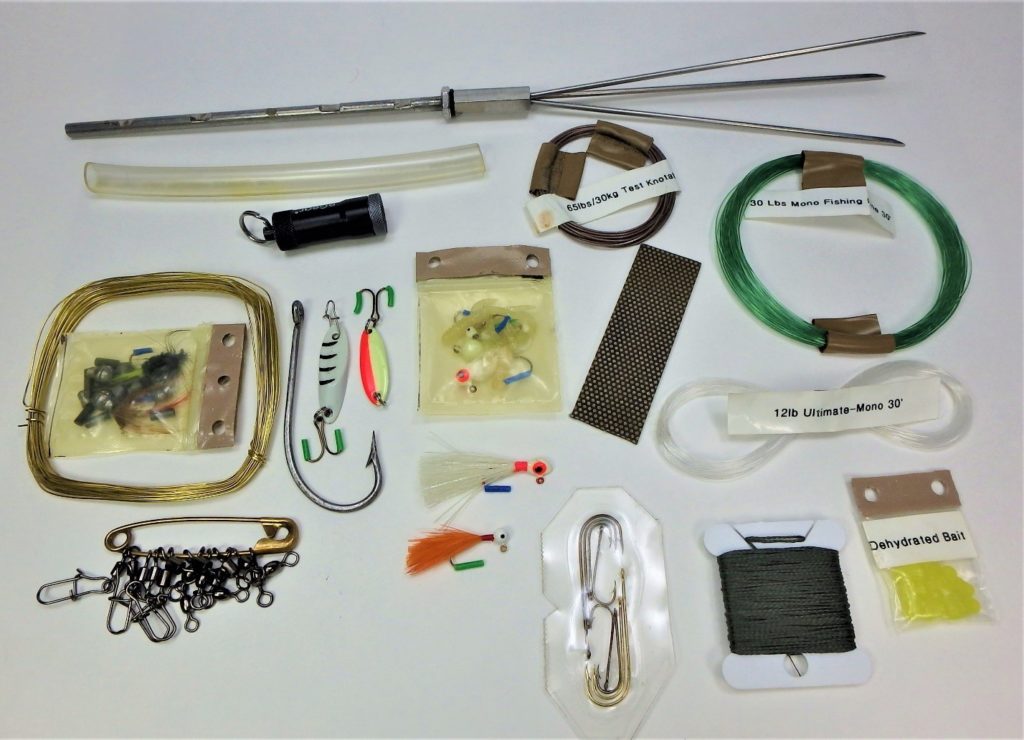 Note: Many of the kit contents (thread, retroreflective tape, 100MPH tape, sheet aluminum, bits of emergency blanket, etc.) can be used in conjunction with fishhooks to make artificial baits and the limitations of the article format does not allow me to detail all their applications but the reason I include as much detail as I do on fishing gear is fishing produces food more dependably than hunting and trapping over the bulk of the planet.
Note: Many of the kit contents (thread, retroreflective tape, 100MPH tape, sheet aluminum, bits of emergency blanket, etc.) can be used in conjunction with fishhooks to make artificial baits and the limitations of the article format does not allow me to detail all their applications but the reason I include as much detail as I do on fishing gear is fishing produces food more dependably than hunting and trapping over the bulk of the planet.
- Paralyzer Gig Head, Takedown – Gig heads are attached to shafts to spear fish, crustaceans and small game and this type is the most effective gig head I have found to date that is compact enough to consider including in a PSK. The tubing used to secure the tines is also useful to access water in seeps and with filters. With the gig secured to a shaft, a length of surgical tubing can be attached to the shaft for use as a fling spear.
- Fishhooks – More fishhooks can be stored in less space by flat packing them. This is important because survival fishing and trapping success depends on setting large numbers of hooks, traps or snares. Lay your largest hook on a strip of clear repair tape and use a pair of tweezers to add ever smaller hooks. When finished, add a few desiccant pellets, making sure to include an indicating pellet or two or a Zerust Plastab and then slowly seal the package with a second strip of tape, chasing out any air bubbles that form as you go. As to size, you can catch a large fish on a small hook, but the reverse is not true. Brass plated hooks resist rust and thus reduces the need for rust removal and sharpening, but hooks should be needle sharp before use. Another reason to include plenty of smaller fishhooks is that in a survival situation, birds and squirrels can be also be caught with fishhooks sized 10 and smaller, especially in combination with Speedhook or similar snares that set the hook. Long shank Aberdeen hooks are generally more effective for survival fishing since the long shank eases hook removal, keeps your fingers away from the mouth when handling toothed species and the longer shanks are easier to incorporate into flies, plugs and other field-expedient artificial baits.
- Kevlar Trip Line, 85 Lbs. Test*** – Use as a hand line, long line or bank line.
- Leader Line – Leader line is lighter, more elastic monofilament line (for our purposes) that is difficult for fish to see and feel but won’t snap at a sharp tug. Use it to connect a hook to the handline. In the mountains, this should be light, around 12-15Lbs. Along larger rivers, the coast and over water, consider adding some heavier line in the range of 20-30Lbs, but don’t go after monster fish or you could lose what little tackle you have.
- Small Split Shot Sinkers – Having more sinkers enables you to put more lines in the water. You can add more small sinkers the line or tie a loop in the line, attach a knotted line to the loop and attach a row of small split shot sinkers to that line that, added together, equal the weight desired. This is much easier than turning large sinkers into smaller ones.
- 3-way Strong Swivels, Swivels & Snap Swivels – Three-way swivels can be used as regular swivels by simply ignoring the swivel that rotates or used to float bait off the bottom. In a river or current, this can impart lifelike movement to the bait even when left unattended. You should leave lines unattended long of course or you may lose your catch. Standard swivels prevent lines from twisting. A snap swivel makes it easier to change baits on a handline.
- Diamond Sharpener – Use a thin diamond sharpener or bit of waterproof emery paper to sharpen hooks before use.
- Flies (2) – I have chosen the artificial baits in this list to work on the greatest number of species throughout the areas I frequent. Many species will take a fly and they occupy precious little space. In smaller kits, flies can also be improvised using other components included in this list.
- Small Glow Jigs, Soft Body, Fletched & Jigheads – Apply a scent attractant and store them inside a small zip seal bag that can later be used with a sinker and bait as a strike indicator. Choose artificial baits that work for the greatest number of species. Luminescent paint enables artificial baits to be used for night fishing and ice fishing. As with hooks, small baits can catch large fish, but the reverse is untrue.
- Small Glow Spoons – Small spoons can be cast or jigged. To make them fit better in my PSK, I replace the treble hooks they come with, with double or single hooks.
- Coated, Knot-able Leader Wire & Crimps – Carrying knot-able leader wire and crimps instead of pre-made leaders enables you to use the materials to make snares instead of leaders or as the situation dictates.
- Large Fishhook (for Gaff) – Most fish are lost while landing them and using a gaff cuts down on this loss. A gaff can also be used to snag fish even when they aren’t biting.
- LED & Spare Battery*** – Use to load the luminous materials for night fishing and ice fishi
- Dehydrated Bait, Scented – I include some dehydrated bait scented with shrimp and crayfish in case there isn’t any bait to be found. After you catch a fish with artificial bait, a jig or a lure, you can then use the offal to bait for bait.
Foods
- Salt & Spices – Once you have killed and eaten an animal or two over your fire, salt and spices will be among the very first things you’ll add to your survival kits since they make wild edibles and small game palatable in places or times of year when spices are not readily available. After a few bland meals, spices will earn a place of reverence in your survival kit. Barbeque powders are one of my favorites for use with gamey meats. Javelina isn’t my favorite, but BBQ javelina tastes better because it tastes like BBQ sauce.
- Gatorade Powder – When pushed to your limits and beyond, you can only drink so much water and you’ll reach a point where one more sip will make you vomit. When you are sweating profusely due to hard exercise, your body needs electrolytes and minerals in addition to water. At that point, sports drinks can keep you from becoming a heat casualty.
- Cera-Lyte Electrolyte Replacement Powder* – See Water heading.
- Low Moisture, Non-thirst Provoking Ration – Many rations fall under this category. For use in PSK’s, I prefer the bars from US General Purpose Survival Rations or Millennium bars. Although they have a shelf life of five years, I have eaten them after ten and they’d probably still be edible after thirty years.
- Energy Bar – A PSK favorite. I’d choose a few Clif Bars over the same weight and bulk in wire snares any day.
- Charms Hard Candies – These have been included in some US military survival packs because they contain useful sugars and carbohydrates, keep saliva production up, which combats thirst, and boosts morale. Even a little food is far better than none at all because the body needs some sugars and carbs in order to tap into fat stores and it needs sugars to get shivering again when cold.
- Spiced Cider Drink Mix – Can be heated to warm you up and provides a quick shot of energy to combat the cold.
- Tea – Drink mixes improve the taste of water and little tea can help you stay awake and give you some needed energy.
- Bouillon Packet – Issued as soup & gravy base in GP Survival Rations. If you are not limited to non-thirst provoking foods, you will want to add salt. When meat is roasted over coals or a fire, fat drips into the fire, taking precious calories with it. Calories from fat are hard to come by in nature and you cannot afford to waste them. Boiling small game as stew or soup ensures that those calories make it into your belly rather than dripping away into your fire.
Communications/ Signaling/ Rescue/ Self-recovery
- Water-resistant Paper & Pen or Pencil* – Useful for written communications, recording symptoms, journaling, planning and orienteering. Take notes as to what works and what doesn’t to improve your PSK.
- IR Finger LED & IFF Patch** – Issued in some armed forces kits so personnel wearing night vision can tell friend from foe.
- Emergency Signal Whistle** – See Part 2. Blast in groups of three to signal for help.
- Retroreflective Adhesive Tape* – See Part 2. Also useful for fishing.
- Signal Mirror*** – See First Aid/Medical and Part 2.
- Map & Button Compass** – See Part 2.
- LED – I carry a more powerful AAA LED that is useful for night signaling elsewhere in my survival/self-recovery core layer, but some folks prefer to include it in their PSKs.
- Needles & Threader* – I include a sail needle, a sewing needle or two and a flat needle threader since it takes up virtually no space and is helpful when my hands are cold, wet or banged up. All needles should feature large eyes so they can be used with coarse improvised thread or sinew. Sewing needles are handy for making, modifying and repairing fabric clothing and the sail needle is useful for leatherwork.
- Fire Starting Aids*** – Don’t rule out signal fires but do be aware of their limitations. Chief among those is that they take a long time to light relative to how quickly an aircraft passes overhead, but their light and smoke can be seen a long way off.
- Local Currency – More likely to save your life than handgun in some parts of the world. Should you effect self-recovery, you’ll want to make phone calls, something to eat, a place to stay and possibly transportation once you make it out to a road or river and to a town. The binder clip hands can also open handcuffs and have better plausible deniability than a handcuff key.
- Small Gold Rounds or Ingots – Small gold coins and rings have long been included in survival kits for personnel who may need to barter for equipment, supplies, aid or transportation.
- Emergency Blanket or Bivvy*** – A signal orange blanket or bivvy makes an outstanding visual signal during daylight hours and even camouflaged blankets can be turned over to signal with their reflective aluminized sides.





























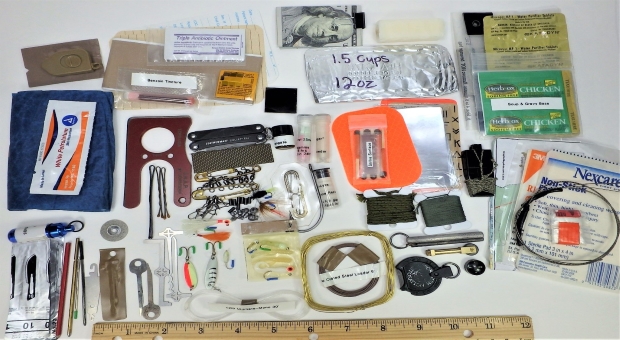

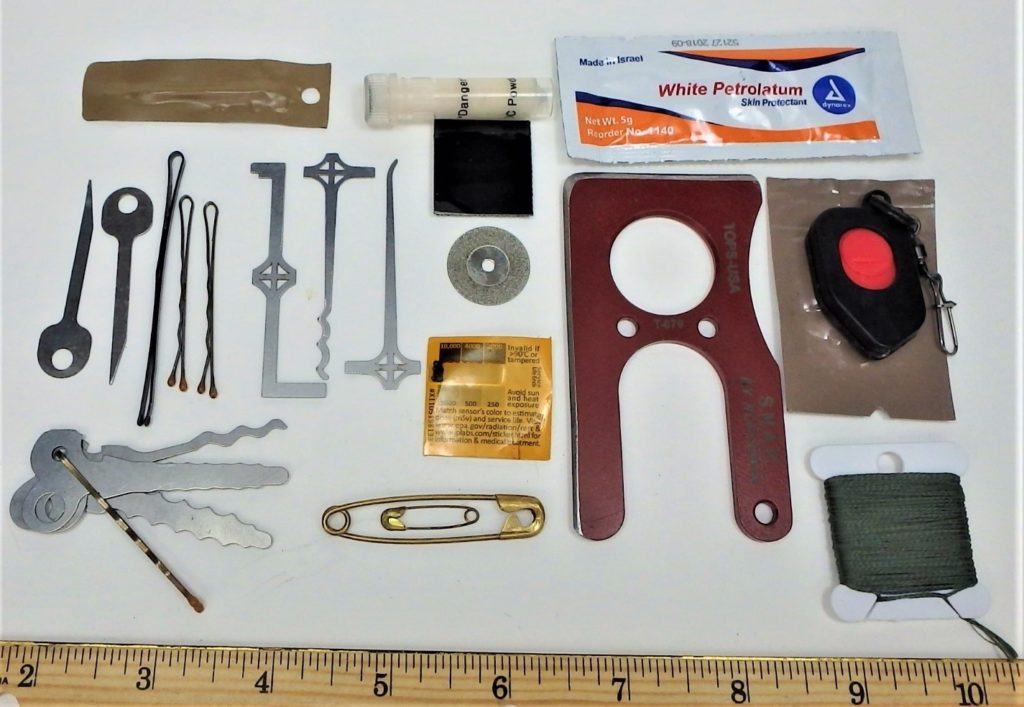
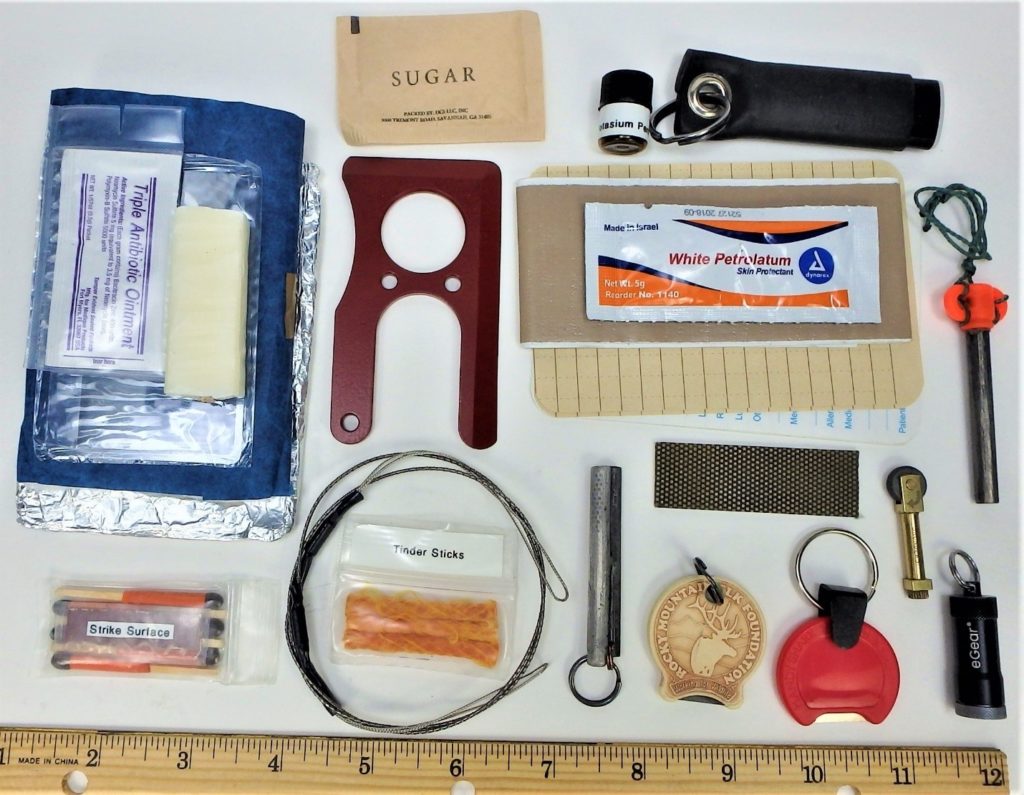
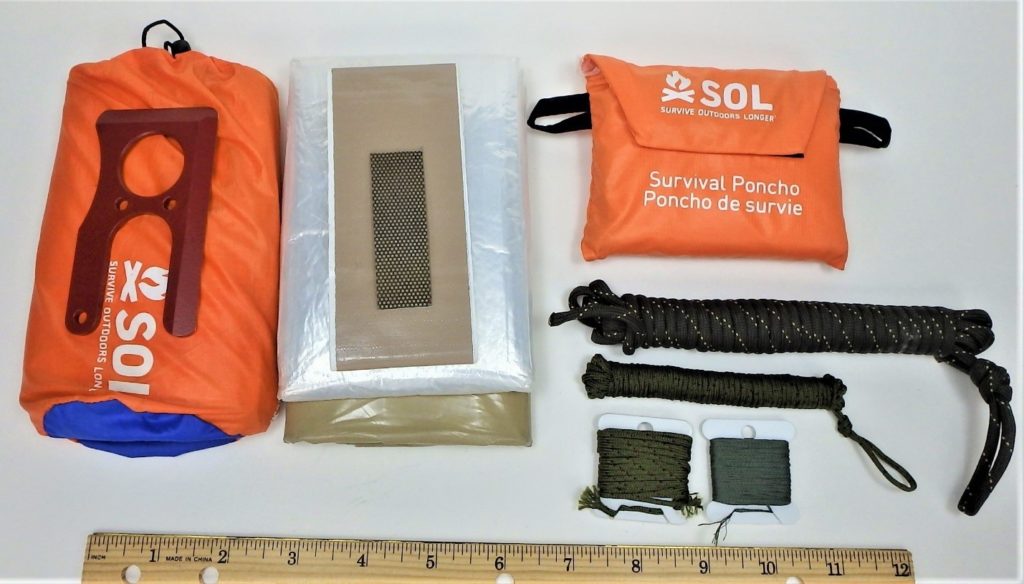
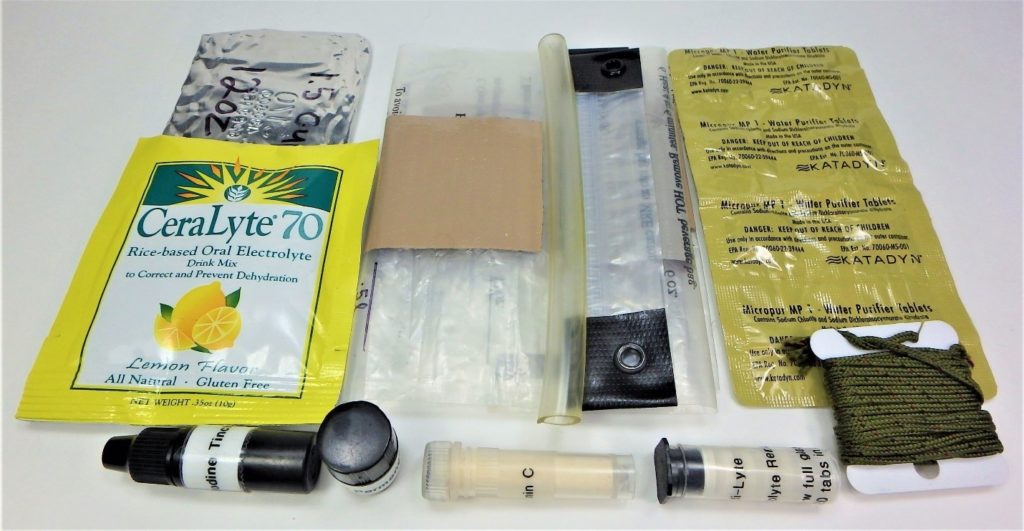
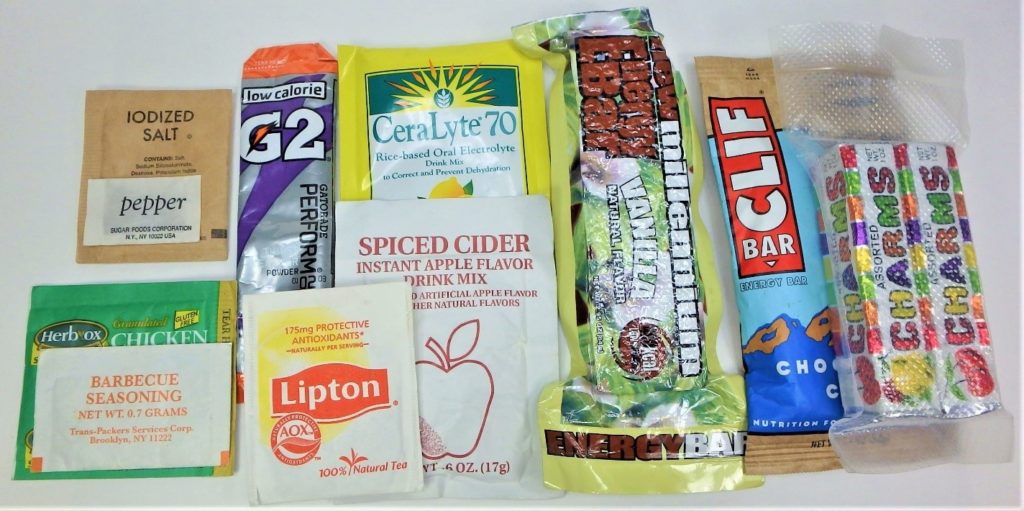
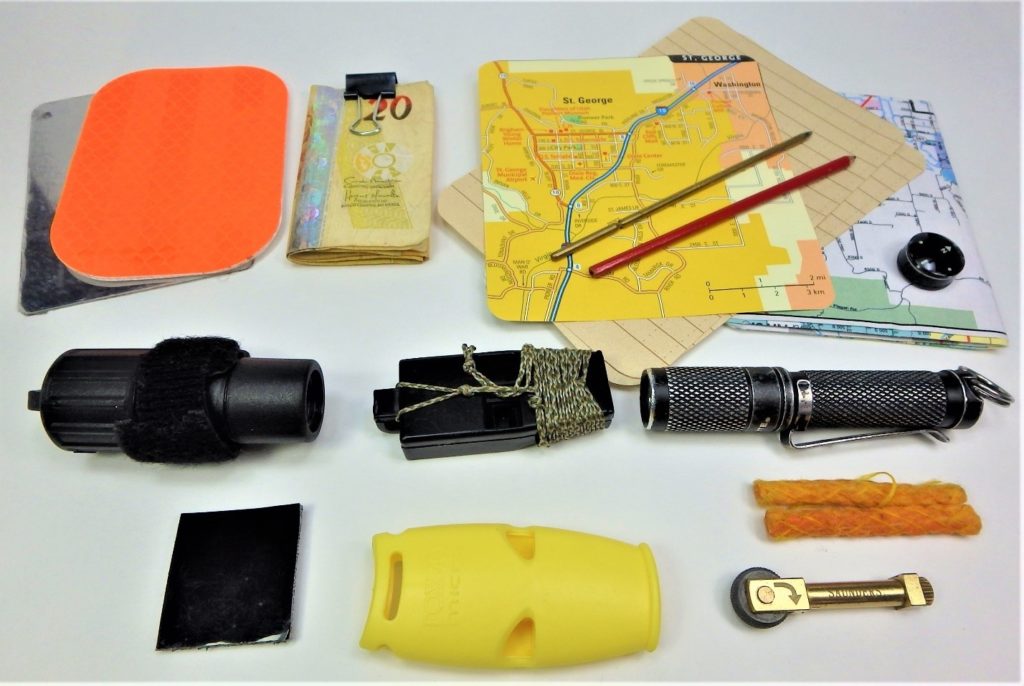






















































A lot of good suggestions that I haven’t read elsewhere. This is useful information.
GREAT suggestions, in creating a “Checklist” to be included in Survival Carry bag or in Military Equipment Bag!!! To be available to members of MY Small Unit teams!!! inviting others in sharing their ideas/comments!!!